Pierce Arrow, 1 of 4, known ownership history, frame-off restoration, Exquisite
1933 Other Makes 836 for sale in Macedonia, Ohio, United States
| Condition: | Used |
| Item location: | Macedonia, Ohio, United States |
| Make: | Other Makes |
| SubModel: | 836 |
| Type: | Coupe |
| Year: | 1933 |
| Mileage: | 85,981 |
| VIN: | 2360225 |
| Color: | Burgundy |
| Number of cylinders: | 8 |
| Fuel: | Gasoline |
| Transmission: | Manual |
| Interior color: | Black |
| Vehicle Title: | Clear |
| Want to buy? | Contact seller! |
Description for Other Makes 1933
Inevitably, in any discussion of Pierce Arrow, Packard, or Peerless, the “Three Ps” thing comes up. Yes, they were all magnificent motorcars, some more magnificent than others, but I would argue that Pierce Arrow stands at the top of that particular pile. In fact, I might go out on a limb and argue that Pierce Arrows in general might just be the best overall American cars ever built. Heresy, you say? Maybe. But few other cars from the brass era command the prices that the massive Pierce Arrow road locomotives do and there’s an argument to be made that they went out of business because they were simply too good. A handful of others might be more remarkable (Duesenberg and the Marmon Sixteen come to mind), but if you want exceptional quality, cutting-edge technology, and impeccable style, no other American car delivers all of those things as consistently as a Pierce.
This lovely 1933 Pierce Arrow Model 836 rumble seat coupe is one of just four known to exist and has a documented ownership history back to Day One. The 836 denotes an eight-cylinder engine and a 136-inch wheelbase, and it was technically Pierce’s “entry level” car, but in the early 1930s luxury car market, there was really no such thing as “entry level.” It’s interesting to note that an identical car was ordered new by Ginger Rogers, so it’s high style indeed, and like most Pierce Arrows with their fender-mounted headlights, it’s recognizable at a glance. You can see design touches from the groundbreaking Silver Arrow show car throughout, and parking this car next to almost anything comparable from the era, it looks very long, low, and sleek.
This particular car was originally owned by Dr. Grant P. Pennoyer of New York City, who seems to have kept it until at least the late 1940s. In fact, we have a wonderful hand-written letter to the second owner describing the car’s idiosyncrasies (“Engine runs best with only hood rear ventilator open”), and you can tell that his love for the car was sincere. We also have maintenance logs for the car throughout the 1940s and 1950s, showing that it changed hands twice in that period and was driven to Cleveland, Ohio on June 10 and 11, 1952 where it was photographed at a closed gas station in Shaker Heights Ohio by a high school student who was an avid classic car fan (of course, they weren’t known as “Classics” at the time). Shortly thereafter, it was apparently placed in storage, with the log book noting it was “on blocks.” In 1963, it was sold to John P. Schlifer for the not insubstantial sum of $1075, and Mr. Schlifer kept the car for a remarkable 30 years, always intending to embark on a restoration and disassembling the car in his barn. In 1992, Mr. Schlifer’s son approached a local gentleman who was known to tinker with old cars, mostly Model A Fords, and asked if he would be interested in his deceased father’s old car in the barn. That fellow purchased the disassembled Pierce for the fairly princely sum of $20,000, noting that it seemed almost entirely complete, and, most remarkably, there wasn’t a speck of rust on the body or chassis. Shortly thereafter, he sent it to noted restorers Jack Heimovics and Nancy Pound and their shop, Shade Tree Motorcars, performed an extensive frame-up restoration on the Pierce (photos and receipts for the restoration are included with the car). In 1995, it was completed and debuted to win several awards, including a CCCA National First Prize. It has also been invited to several prestigious concours events, including the Glenmoor Gathering and the Concours at Stan Hywet Hall.
The owner was not interested in shows and trophies, so the car became a favorite tour vehicle, and he estimates that it has been driven perhaps 5000 miles since the restoration was completed in 1995. It remains in near show-quality condition with only minor demerits for age and use, but nothing that requires attention or immediate repair. Mr. Heimovics dug through the cars layers of paint and upholstery (samples of which are neatly included in a little booklet showing the various materials used originally and in subsequent re-trims) and determined that the car was originally burgundy, so that’s how the car was refinished. You will note that the fenders are a slightly different color, which is intentional, and while the bodywork is traditional solid paint, the fenders have a splash of period-correct fine metallic to provide contrast. In photos it seems minor, but in the sunlight, the effect is quite striking. Finish quality is excellent, which can be attributed to the excellent base stock as well as Heimovics’ work, and aside from some inevitable signs of age, it looks great under any conditions.
At the same time, all the chrome was re-plated to show standards and still sparkles with no notable blemishes. The Pierce is remarkably restrained in its use of brightwork, but the effect is still imposing, particularly with the black insert in the grille shell. All the original details are nicely refinished, from the separate marker lights atop the horns to the wonderfully over-built rumble seat steps to the familiar three-element taillight, whose three markers are fully operational (even the back-up light works). When it was originally finished the lights were incorrectly ordered, but a Pierce Arrow expert corrected that particular flaw a few years ago. The black padded roof is an unusual feature, but there’s at least one other 836 rumble seat coupe with a similar padded roof in a lighter material, so it’s quite correct and the original samples indicate that black long-grain leatherette was the correct material. To finish, it was treated to a bright yellow pinstripe to highlight the body moldings and the owner’s initials on the doors. Interestingly, the original owner’s initials (GPP) were visible on the doors when it was discovered in the barn, so these were reproduced using a similar style and font. The only item worth noting is that the headlight lenses are acrylic because originals, of course, are practically unobtainium. They look the same and you don’t have to worry about a stray pebble doing thousands of dollars’ worth of damage, so it’s a reasonable choice.
The interior was originally an olive green or brown Bedford cord with leather trim, but when it was restored, they knew they would be using the car regularly, so simple black leather was chosen for its superior durability and wear resistance. It’s expertly trimmed with simple pleats and remains comfortable for all-day touring. The door panels are gray wool broadcloth with correct map pockets and glowing wood garnish moldings that are just spectacular. On the floor you’ll find plush gray carpets with custom-fitted protective mats, and the top of the instrument panel is wrapped in matching black leather, as original (noted in the material samples). All the gauges were rebuilt and remain fully functional, including the capillary-style temperature gauge. We have not tested the clock, but it was restored at the time and probably needs nothing more than to be wound periodically. Pierce equipped its cars with Free-Wheeling, an invention that seems shockingly unsafe to us today, but was touted as a fuel-economy measure when it was new. We ignore it and leave the system off, as we advise you to do as well. It is also equipped with a functioning Startix system that lights the engine almost immediately, but be ready to catch it when it fires because the hand throttle on the hub of the steering wheel is not connected. The rumble seat is surprisingly spacious and is trimmed in matching black leather with special fold-out leather arm rests and yes, the vintage 1930s golf clubs are included with the car!
Mechanically, Pierce Arrow’s robust 366 cubic inch straight-8 was more than a match for any other 8-cylinder engine on the market, including Packard’s Super 8. With nine main bearings, it’s impossibly smooth and makes a rather substantial 135 horsepower. It was fully rebuilt at the time of restoration and as I mentioned, probably has about 5000 miles on it. It starts quickly and easily, although the automatic choke has been disabled and a manual choke added to the original Stromberg carburetor. It’s a bit grumpy when cold, but once it has warmed up to operating temperature, it moves the big coupe with ease. Pierce Arrow was a pioneer in the use of hydraulic valve lifters, so it ticks over quietly and smoothly and doesn’t need adjustment like mechanical lifters would. The exhaust manifold was porcelainized, but as is common with cars that are driven, it has cracked and chipped over the years and it’s all but inevitable if you want to use the car as intended. It makes 50 pounds of pressure at cold idle and about 30 pounds when it’s warmed up, and on the road the generator and regulator system keep the battery topped off without issues. It has been fitted with an electric pump for priming but it runs fine on the original mechanical pump, which also has its own priming mechanism.
Synchromesh had spread throughout the industry by 1933, and 2nd and 3rd gears are synchronized on the Pierce Arrow. First and reverse are not, and you may find they crunch a little bit when the gearbox is cold, a condition that the original owner warns about in his notes. Out on the road, you really only need high gear, as the big straight-8 has no problem pulling cleanly from walking speeds and it’s happy at 55 MPH. The suspension is superlatively smooth, the steering is commendably light for such a massive car, and the brakes, while still mechanical, have a vacuum assist and an automatic hill-holder mechanism that both add confidence behind the wheel. It is fitted with six artillery wheels that are just beautifully finished with yellow pinstripes and a traditional Pierce Arrow hubcap, and it rolls on 7.50-17 Bedford wide whitewall tires that look period correct and were fitted relatively recently.
This is an extraordinary car. Pierce Arrow rumble seat coupes are always in demand, and for good reason. Elegant, sporting, and impeccably dressed, it’s the pinnacle of early 1930s engineering and incredibly rare compared to its “Three Ps” competition. Extremely well documented with paperwork that will provide hours of entertaining reading, this is the rare Full Classic with a strong pedigree to back up its wonderful presentation.
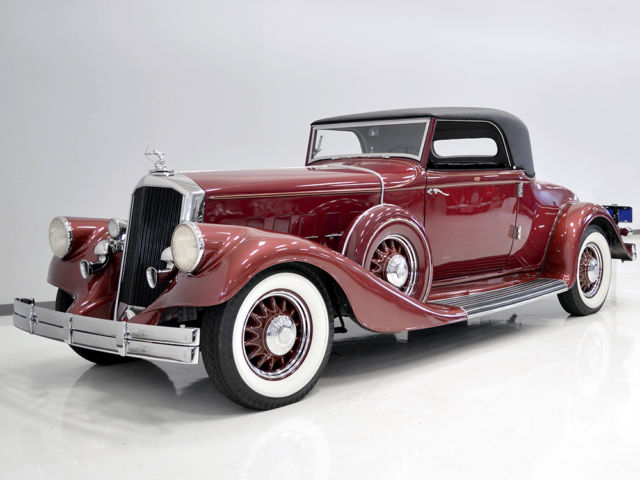
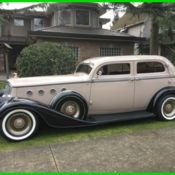 1934 Pierce Arrow (Golden Arrow) Club Sedan 502ci GM Tonawanda Gas Engine Auto
1934 Pierce Arrow (Golden Arrow) Club Sedan 502ci GM Tonawanda Gas Engine Auto
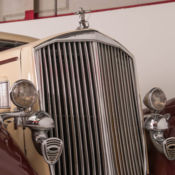 1935 Pierce-Arrow 1245 Sedan, One of only 875 Pierce-Arrows built in 1935
1935 Pierce-Arrow 1245 Sedan, One of only 875 Pierce-Arrows built in 1935
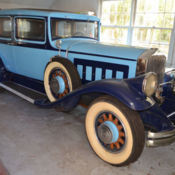 1931 PIERCE ARROW
1931 PIERCE ARROW
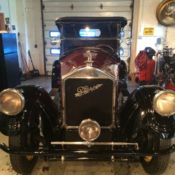 1926 Pierce Arrow
1926 Pierce Arrow
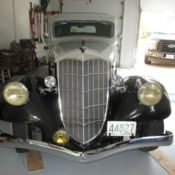 1934 Pierce-Arrow Brougham
1934 Pierce-Arrow Brougham
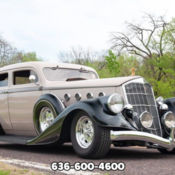 1934 Pierce-Arrow Club Sedan
1934 Pierce-Arrow Club Sedan
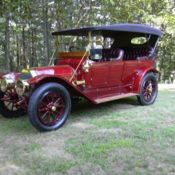 Pierce Arrow 5 Passenger Brass Era 60 MPH Touring Car
Pierce Arrow 5 Passenger Brass Era 60 MPH Touring Car
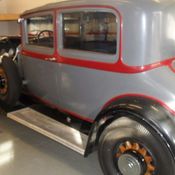 1930 Pierce Arrow Victoria coupe
1930 Pierce Arrow Victoria coupe